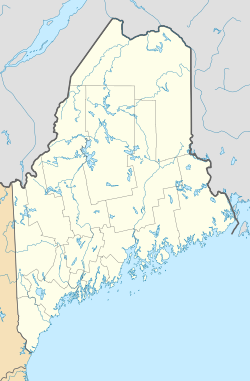Williston-West Church and Parish House | |
 The building in 2025 | |
| Location | 32 Thomas Street, Portland, Maine |
|---|---|
| Coordinates | 43°38′52″N70°16′16″W / 43.64778°N 70.27111°W |
| Area | 0.5 acres (0.20 ha) |
| Built | 1897 |
| Architect | Francis H. Fassett (church), John Calvin Stevens (parish house) |
| Architectural style | Gothic |
| NRHP reference No. | 80000232 [1] |
| Added to NRHP | June 22, 1980 |
The Williston-West Church and Parish House are an historic church and house at 32 Thomas Street in the West End neighborhood of Portland, Maine, United States. The church was built in 1897, and is a significant Gothic work by Francis H. Fassett. The parish house, built in 1905, was designed by father-and-son duo John Calvin Stevens and John Howard Stevens. The church is historically notable as the founding site of Christian Endeavor International, considered a major forerunner of modern youth ministries. The property was listed on the National Register of Historic Places in 1980. [2] The church congregation merged with another in 2011, and the property was sold for rehabilitation and redevelopment. It now houses professional offices.


